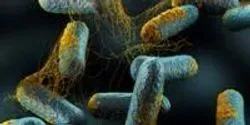Argonne National Laboratory

By levitating a bead of ceramic oxide, heating it with a 400-watt carbon dioxide laser, then shooting the molten material with X-rays and neutrons, scientists with the U.S. Department of Energy's Oak Ridge and Argonne national laboratories have revealed unprecedented detail of the structure of high-temperature liquid oxides.

Ferroelectric materials–substances in which there is a slight and reversible shift of positive and negative charges–have surfaces that are coated with electrical charges like roads covered in snow. Accumulations can obscure lane markings, making everyone unsure which direction traffic ought to flow; in the case of ferroelectrics, these accumulations are other charges that “screen” the true polarization of different regions of the material.

Peter B. Littlewood, a professor of physics at the University of Chicago and the associate laboratory director for Physical Sciences and Engineering at the U.S. Department of Energy’s Argonne National Laboratory, has been selected to serve as Argonne’s 13th director, President Robert J. Zimmer announced March 25.

Researchers at Berkeley and Argonne National Labs Discover Highly Promising New Class of Nanocatalyst.

TUSCALOOSA, Ala. — Two of the nation’s fastest supercomputers will aid a research team, led by a University of Alabama computational chemist, in guiding both the development of new nuclear fuels and clean-up efforts from past nuclear fuel and weapon production.













